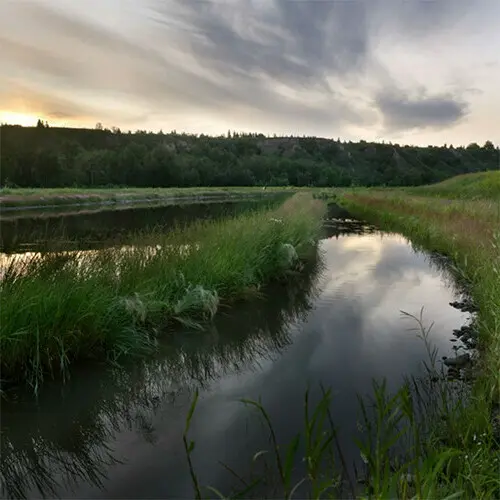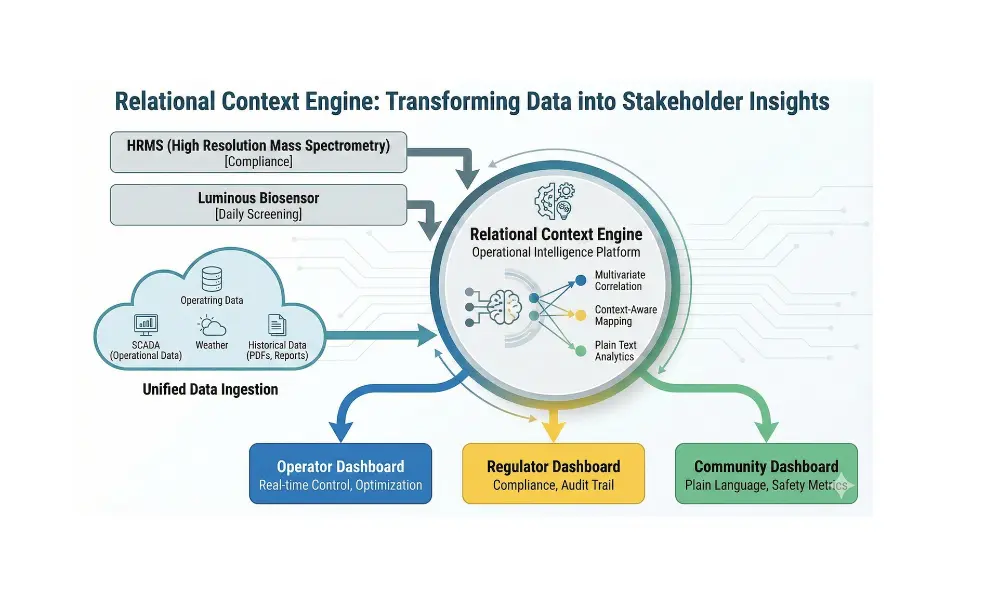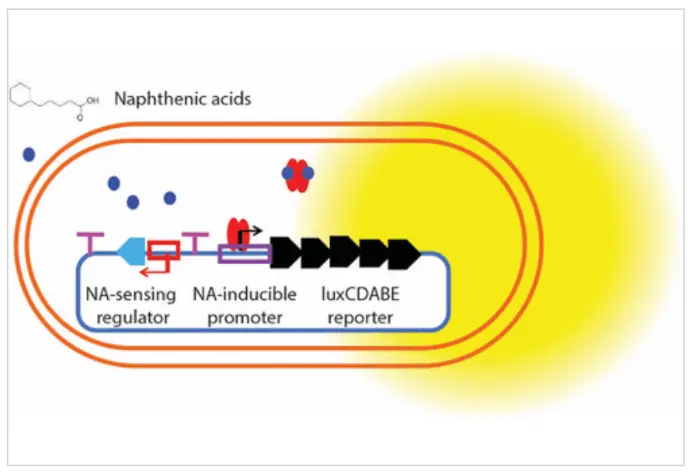The Solution to
The Tailings Ponds
Naphthenic Acid
Monitoring Bottleneck
NA tests within 24-hour +
AI Platform = Operational intelligence for oil sands tailings treatment
Contact us
"Don't replace the gold standard HRMS, complement it with operational frequency"
The Challenge
"12-18 months" - This is the timeline Alberta's OSMWSC wants oil sands tailings water release guidelines in place.
Operators must prepare now to transition from 60 years of "contain" to "regulated release" of ~1.4 trillion litres of OSPW.
"Naphthenic Acids are the bottleneck" - No safe NA levels means no release approval!
"HRMS monitoring can't scale" - (6-8 weeks, $700-$1,000/sample). Quarterly snapshots can't optimize dynamic biological treatments.
The question will be:
"Is my treatment working right now,
and how can we optimize it?"
The Solution
Operational screening and intelligence between HRMS compliance checkpoints:

"We don't replace HRMS, we enable daily monitoring while HRMS validates quarterly."
Luminous Biosensor:
- High volume NA screening
- Fast - results in 24-hour
- High correlation with HRMS
- Specific
- Simple
- Low cost

Operational Intelligence Platform
- Transforms data into insights
- Natural language queries
- Multi-stakeholder dashboards
- Predictive analytics
- Immutable file store
- Regulatory ready

Why This Matters
✅ For Operators: Detect treatment failures in days (not months), optimize based on data (not guesswork)
✅ For Regulators: Multi-stakeholder transparency addressing OSMWSC requirements
✅ For Scientists: Peer-reviewed validation (ACS Synthetic Biology, 2024), field-tested at Kearl wetland Pilot 2024/25
✅ For Indigenous Communities: Real-time monitoring access with plain language presentation, built for transparency, refined through engagement

Validation
This is operational technology solving real problems today,
not theoretical concepts.
Peer-Reviewed:
"ACS Synthetic Biology (2024)"
Regulatory Aligned:
"OSMWSC compliance frameworks ready"
Field-Tested:
"Kearl multi-season wetland pilot validated"
Schedule a Briefing
45-60 min.
- Biosensor Validation.
- Confluent AI Discussion
- Q&A with Dr. Shawn Lewenza (CSO), and Greg Saunders (CTO)